26 Best Flowers to Grow In Florida (With Pictures)
-

- Last updated:

Florida is one of the hottest states in the US. With around 240 sunny days a year and above-average humidity, it’s a great place to grow flowers. However, it can also be quite challenging, especially if you’ve got delicate plants in your garden. Do keep in mind that Florida belongs to the 8–11 hardiness zones; the heat can be unforgiving at times, and the soil isn’t always “welcoming”.
Don’t you worry, though, because, in this guide, you’ll find a list of the best flowers that not only grow but prosper in Florida. They are low-maintenance and perfect for the local climate. Overall, we’ll go over 26 blossoms. To make navigation easier, we broke the list down into three major categories: perennials, annuals, and shrubs. Take a look!
The 26 Best Flowers to Grow in Florida
Perennials
This is the largest group of flowers/plants on the planet. Perennials are resilient and (relatively) easily withstand environmental factors. Perennial flowers last for at least 2 years. That means you can plant them once, cut the dead stems, and the rootstock will grow back next year. On the downside, the blooming period is quite short: 2–8 weeks or up to 3 months if you take proper care.
There are more than a dozen perennial flowers that you can grow in Florida right now. Check them out!
1. Coreopsis
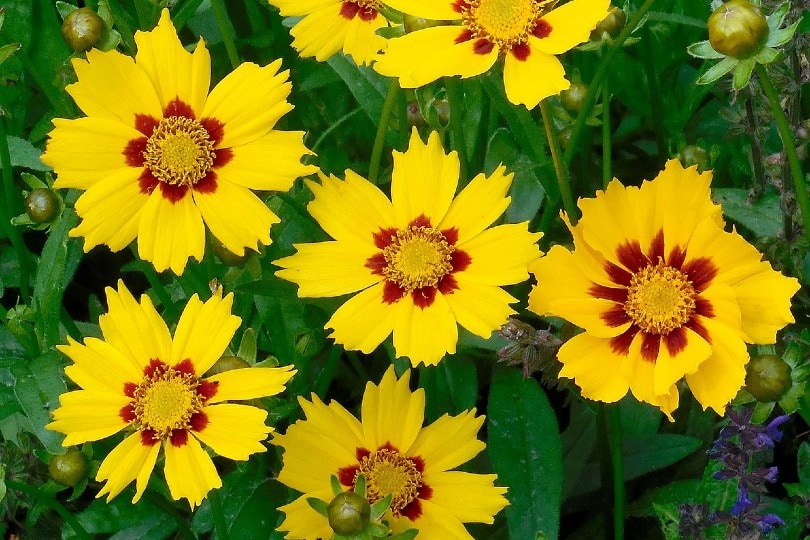
| Botanical Name | Coreopsis spp. |
| Soil | Sandy, well-drained (pH 5.5–6.5) |
| Sun | Full sun |
| Hardiness Zone | 4–9 |
| In Bloom | Summer through fall |
Known as the pot of gold in certain states, coreopsis looks a lot like daisies. Mostly yellow, this flower can also be red, pink, and orange. It flourishes in full sun but can also grow in partial shade. The soil needs to be well-drained, and, preferably, sandy. The blooming period starts in summer (usually in June or July) and lasts through fall. Coreopsis easily “handles” drought and requires very little maintenance.
A quick note: certain coreopsis species are annuals, not perennials. Make sure to check this before making an order.
2. Evolvulus

| Botanical Name | Evolvulus pilosus |
| Soil | Well-drained, moist (pH 6–8) |
| Sun | Full sun |
| Hardiness Zone | 8–11 |
| In Bloom | Mid/late summer |
There are over 100 evolvulus species on the planet and most of them grow on the American continent. This bright, blue flower blooms in full sun, and the hotter it is outside, the better. The blooming period is mid/late summer but can start as early as late May. This flower is not very picky in terms of soil: as long as it’s well-drained and reasonably moist, evolvulus will flourish even if you plant it in a dry and hot area.
3. Golden Dewdrop

| Botanical Name | Duranta erecta |
| Soil | Rich, loamy, moist (pH 5.6–7.5) |
| Sun | Full sun/partial shade |
| Hardiness Zone | 9–11 |
| In Bloom | Spring until frost |
No, the dewdrop flowers aren’t golden or even yellow. Instead, they have a beautiful pink color and can be as tall as 2–3 feet. These blossoms prefer moist and rich soil (preferably loamy) and grow both in full sun and shade (partial). You can expect the golden dewdrop to bloom in mid-spring and it will “stick around” until frost, which is usually November or December in Florida.
Just like the evolvulus, the dewdrop is a tropical flower native to the Americas and mostly grows in Mexico and the US.
4. Lamium

| Botanical Name | Lamium |
| Soil | Well-drained, fertilized (pH 6.0–7.0) |
| Sun | Partial shade |
| Hardiness Zone | 3–8 |
| In Bloom | Spring |
You might know this flower as the dead nettle. It’s pink, but much brighter than most similar plants and can instantly “light up” your garden. Lamium blooms in spring and belongs to a relatively low hardiness zone. When taken care of properly—plant these flowers in well-drained, fertilized soil—lamium can reach 8 inches in height. Also, make sure you put it in a spot with partial shade (full sun isn’t recommended).
5. Canna

| Botanical Name | Canna hybrida |
| Soil | Well-drained, organically rich (pH 6.5) |
| Sun | Full sun |
| Hardiness Zone | 9–10 |
| In Bloom | Mid-summer through fall |
The first thing that will grab your attention here is, of course, the larger-than-average leaves. Mostly yellow-orange, canna can be red, pink, and even salmon. This flower blooms in June–July and lasts through fall and is very easy to take care of if you live in Florida—a hot and humid state. Expose the canna to full sun and see that the soil is well-drained. And if it’s organically rich, you’ll get to enjoy the beautiful flower even sooner!
6. Coneflower
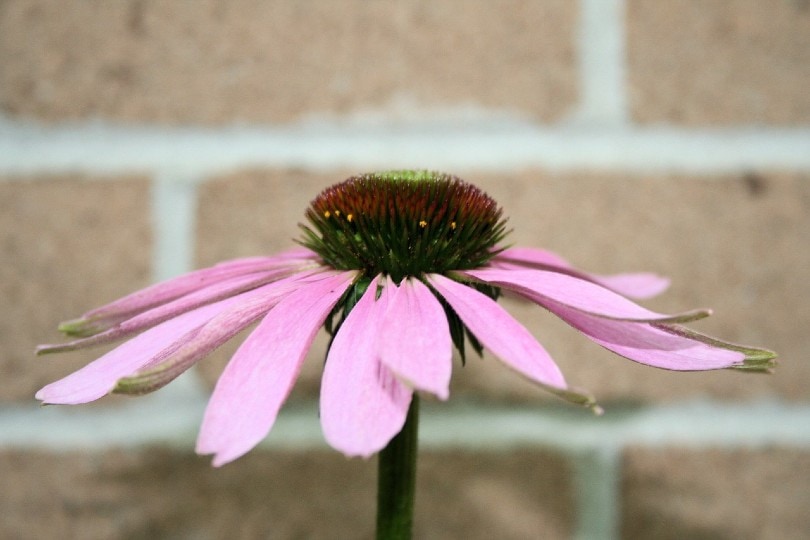
| Botanical Name | Echinacea |
| Soil | Well-drained, sandy, rocky (pH 6.5–7) |
| Sun | Full sun/Partial shade |
| Hardiness Zone | 3–8 |
| In Bloom | Mid-summer to fall |
Coneflowers are incredibly popular not only in Florida but in other states as well. Highly resistant to drought, and heat, and easy to grow, they bloom from summer to fall. Direct sun is preferred, but partial shade works as well. Well-drained, sandy, or even rocky soil will do, as long as it’s not too moist. The pink flowers (or they can be red or yellow) rise above most plants as they grow on tall stalks (up to 36 inches).
7. Persian Shield

| Botanical Name | Strobilanthes dyerianus |
| Soil | Moist, rich (pH 5.5–7.5) |
| Sun | Partial sun/shade |
| Hardiness Zone | 8–11 |
| In Bloom | Late fall to early winter |
Originally from Myanmar, the Persian shield is one of the most stunning and marvelous flowers you can grow in Florida. It mostly sprouts in humid and warm areas, which makes it perfect for the Sunshine State. As for exposure to the sun, it’s recommended to keep this flower in the shade or only partial sun. The soil, in turn, needs to be rich and moist.
The Persian Shield blooms from October to the early days of winter and is just right for beds and borders.
8. Oyster Plant

| Botanical Name | Rhoeo spathacea |
| Soil | Well-drained (pH 6.0–6.5) |
| Sun | Full sun/ shade |
| Hardiness Zone | 9–11 |
| In Bloom | Mid-spring through summer |
Classified as an herb, the oyster plant is another easy-to-grow flower for your garden in Florida. It greatly benefits from exposure to full sun (but also “works with” shade) and grows rapidly in well-drained, low-alkaline soil. Expect Moses-in-the-cradle—a common nickname for this plant—to bloom in April–May through summer. Add it to your garden or use it indoors, water it regularly (once a week), and that’s it!
9. Scaevola

| Botanical Name | Scaevola spp. |
| Soil | Well-drained, rich (pH 5.5–6.0) |
| Sun | Full sun/partial shade |
| Hardiness Zone | 10–11 |
| In Bloom | Late spring through fall |
If you’re a big fan of window boxes and hanging baskets, the lovely and delicate petals of Scaevola will definitely catch your attention. Originally from Australia, it comes from an above-average hardiness zone. While this flower is mostly perennial, it can also be an annual or even a small shrub. Well-drained soil, full/partial sun, and moderate amounts of water—that’s all this lovely flower’s branches need to prosper.
10. Mexican Petunia

| Botanical Name | Ruellia brittoniana |
| Soil | Moist, marshy (pH 6.0–7.0) |
| Sun | Full sun |
| Hardiness Zone | 8–11 |
| In Bloom | Summer through fall |
As the name suggests, this enchanting pink flower originates from Mexico. That automatically means it prospers and blossoms in full sun and moist soil. It would be best for the soil to also be marshy. Early summer days: that’s when the Mexican petunia starts to bloom. It’s an easy-to-grow flower that can also be a shrub and is only 1–3 feet tall. The trumpet-like flowers only last for a day but new blooms do follow!
11. Blanket Flower
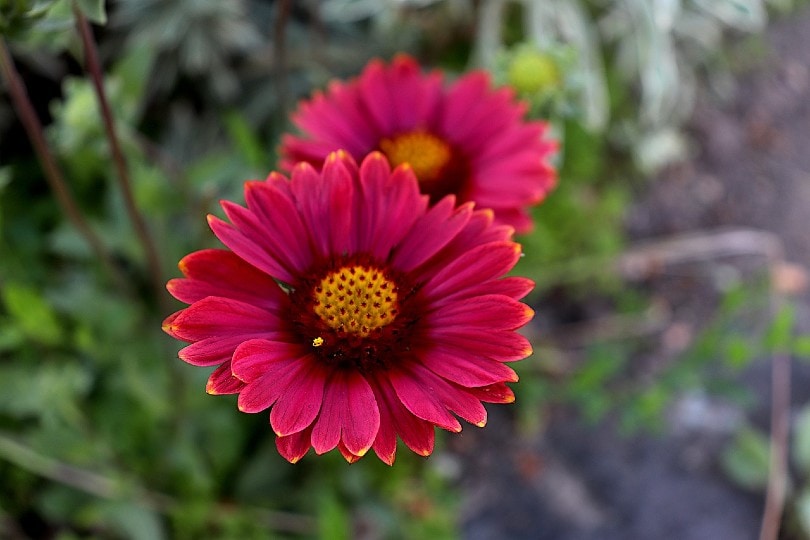
| Botanical Name | Gaillardia |
| Soil | Well-drained, poor (pH 6.1–6.5) |
| Sun | Full sun |
| Hardiness Zone | 5–9 |
| In Bloom | Early to late summer |
Like most plants on the list, the blanket flower is low-maintenance and depends heavily on the sun to grow. So make sure it’s always exposed to UV rays and that the soil is well-drained. Don’t add too much fertilizer into the mix, though, because that won’t do much good to this flower. When treated properly, it will “come to life” in early summer days with red, orange, and yellow patterned petals and grow as tall as 18–22 inches.
Annuals
In contrast to perennials, annuals don’t regrow, no matter how composted, organically-rich, or well-drained the soil is. As for the pros, annual flowers have an extended blooming season. You can plant them in mid-spring, and they’ll last for many months (until the first frost, to be exact, which usually happens in the early days of winter). If you want to have a lush, ever-blooming garden in Florida, combine annuals with perennials.
This way, you’ll always have blooming flowers in your garden, regardless of the season.
12. Purslane

| Botanical Name | Portulaca oleracea |
| Soil | Well-drained (pH 5.5–7.5) |
| Sun | Full sun |
| Hardiness Zone | 10–11 |
| In Bloom | Late spring through late summer |
If you live in the hottest areas in Florida, purslane deserves your attention. It thrives in full sun and only needs well-drained soil to sprout. The blossoming period starts in spring (usually, in mid or late May) and only ends in late summer. Also known in many states as the hogweed, it’s edible for humans but is mostly valued for the foliage and the pink/yellow flowers that are ideal for garden borders.
13. Salvia
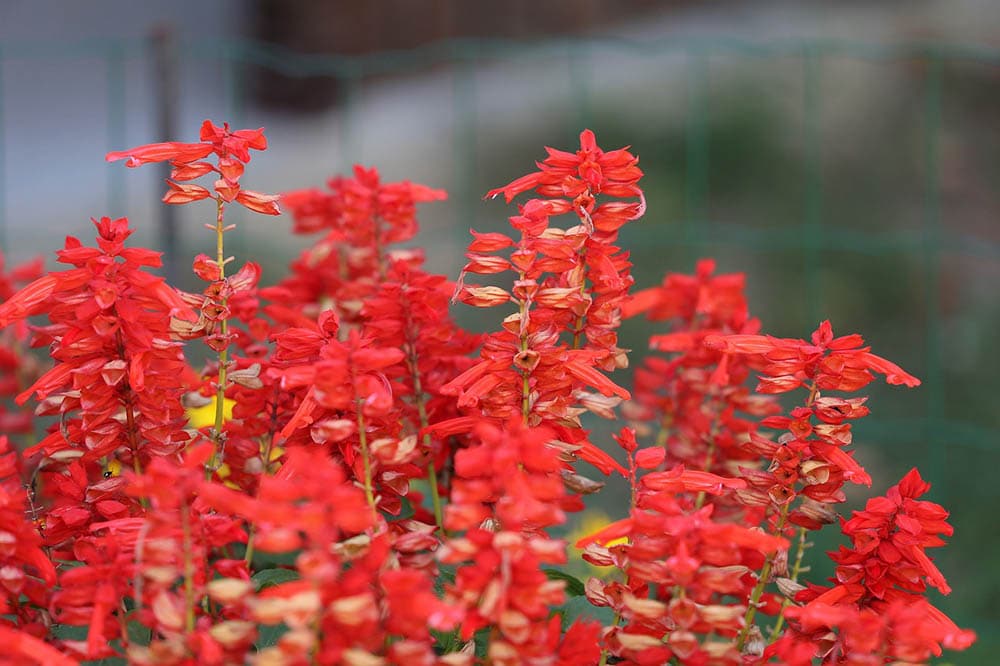
| Botanical Name | Salvia spp. |
| Soil | Well-drained (pH 5.5–6.5) |
| Sun | Full sun/partial shade |
| Hardiness Zone | 8–10 |
| In Bloom | Late spring to early summer |
Salvia also blooms in late spring yet only lasts until the early days of summer (mid/late June). It grows best in full sun but easily adapts to partial shade as well. This is an herb, by the way, and belongs to a large mint family, originally from Mexico. Salvia’s flowers are incredibly bright and can be white, blue, or red (the most common color). It’s pretty tall, too (up to 24 inches).
14. Zinnia

| Botanical Name | Zinnia elegans |
| Soil | Well-drained, organically rich (pH 5.5–7.5) |
| Sun | Full sun/partial shade |
| Hardiness Zone | 4–9 |
| In Bloom | Late spring until frost |
This right here is one of the most spectacular flowers to grow in Florida, and it’s native to the Americas. Make sure it gets enough sun (also shade won’t be a problem) and that the soil is not only drained but organically rich for zinnia to flourish. Blooming starts in May and the flowers die when the temperature drops below 32ºF. Available in a wide range of colors, zinnia is a low-maintenance flower.
15. Pentas
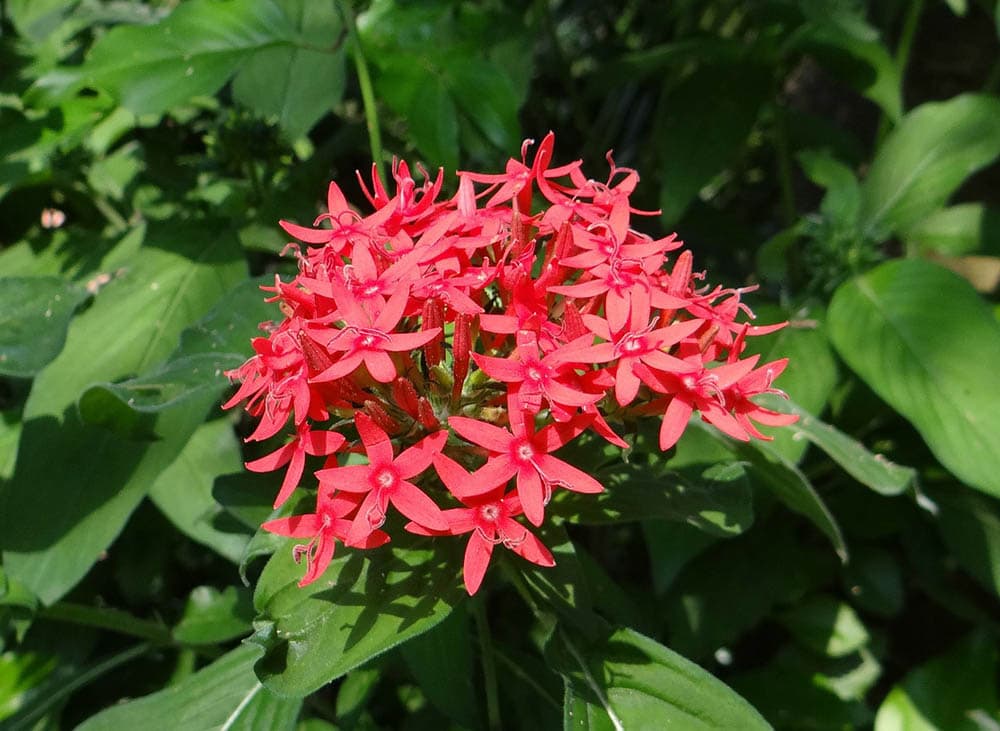
| Botanical Name | Penta lanceolata |
| Soil | Well-drained, moist (pH 6.0–6.5) |
| Sun | Full sun |
| Hardiness Zone | 10–11 |
| In Bloom | Early to late summer |
Have you been looking for a star-shaped flower for your garden? Then pentas might be exactly what you need. The uplifting colors—pink, purple, and red—will please the eye for the whole summer. For that, get them enough sunlight (6–8 hours a day) and use well-drained, moist soil. When you do that, the plant will grow very tall (up to 36 inches).
16. Cuphea

| Botanical Name | Cuphea spp. |
| Soil | Well-drained, fertile (pH 5.8–6.2) |
| Sun | Full sun |
| Hardiness Zone | 8–9 |
| In Bloom | Early spring until frost |
The genus cuphea includes 260 species, both perennial and annual. For Florida, find the one that’s well-suited for a tropical climate, i.e., resistant to heat and drought. We’re talking about exposure to full sun, fertile soil, and moderate watering. The blooming season starts in spring and the flowers have an extended lifespan: they live until frost. The unusual shape of the buds is what makes cuphea so popular.
17. Verbena
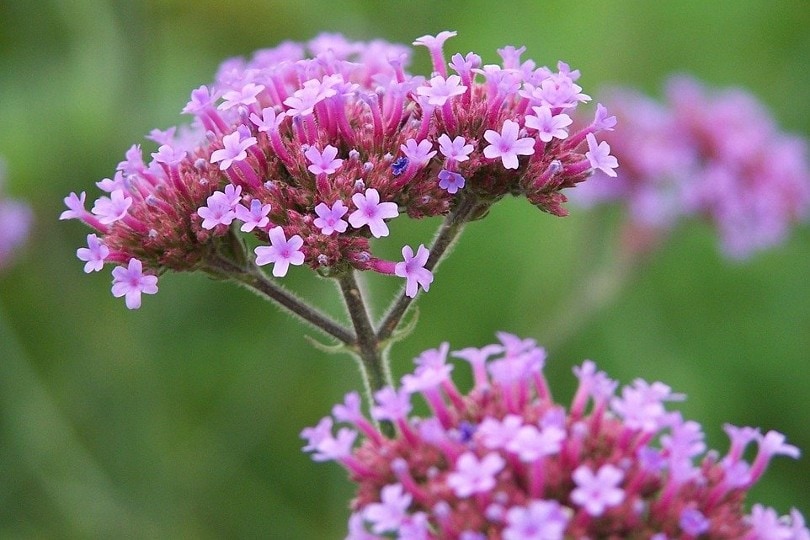
| Botanical Name | Verbena spp. |
| Soil | Well-drained (pH 5.8–7.2) |
| Sun | Full sun |
| Hardiness Zone | 7–10 |
| In Bloom | Early summer to fall |
hat’s special about verbena? Why should you pick it as the next flower for your garden? First, it’s long-lasting: verbena starts to bloom in mid-June up to September–October. Second, it easily withstands the hot Florida climate and isn’t at all fastidious when it comes to soil. A quick note: verbena is used in medicine for sore throats, asthma, and chest pain.
Shrubs
Often mistaken for bushes, shrubs are considered plants. They do have woody stems that make them look like bushes, though. In Florida, shrubs are quite popular, thanks to their enduring nature. Make sure to water them frequently and keep the soil well-drained (and rich with organics). In return, shrubs will flourish and bloom for at least 5–6 years, with certain species living for as long as 6–7 decades.
The following list includes the most beautiful, easy-to-maintain flowering shrubs to grow in Florida.
18. Gerbera
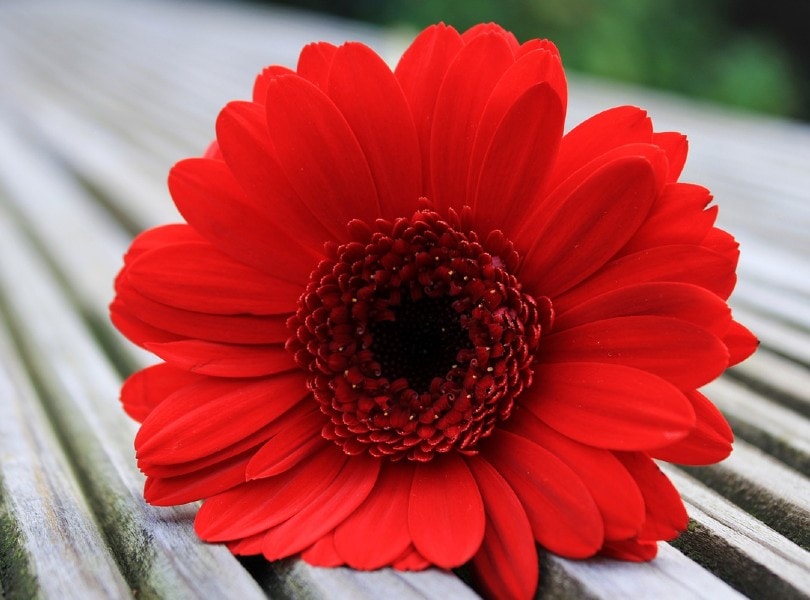
| Botanical Name | Gerbera |
| Soil | Well-drained, composted (pH 5.5–6.5) |
| Sun | Full sun/partial shade |
| Hardiness Zone | 8–11 |
| In Bloom | Early spring through autumn |
Gardening fans that prefer shrubs over flowers will definitely like what gerbera has to offer. This is a widely used plant for gardens across the globe. And it’s well-suited to thrive in Florida. Full or partial exposure to sun, well-drained and preferably composted soil, and moderate watering will help you grow a whole garden of this beautiful shrub with ray-like petals colored in yellow and pink.
19. Bolivian Sunset Gloxinia

| Botanical Name | Gloxinia sylvatica |
| Soil | Well-drained, moist, organically rich (pH 6.0–7.3) |
| Sun | Partial shade/filtered light |
| Hardiness Zone | 9–11 |
| In Bloom | Mid-fall into winter |
Gloxinia is one of the most rapidly growing shrubs. It blooms in September and lives until early winter. The first thing to remember here is that this flower doesn’t like to be exposed to full sun. Instead, make sure it gets filtered light or partial shade. The soil, in turn, is recommended to be moist, drained, and organically rich for the best results. In many ways, the sunset gloxinia resembles cuphea with those red blossoms.
20. Shooting Star
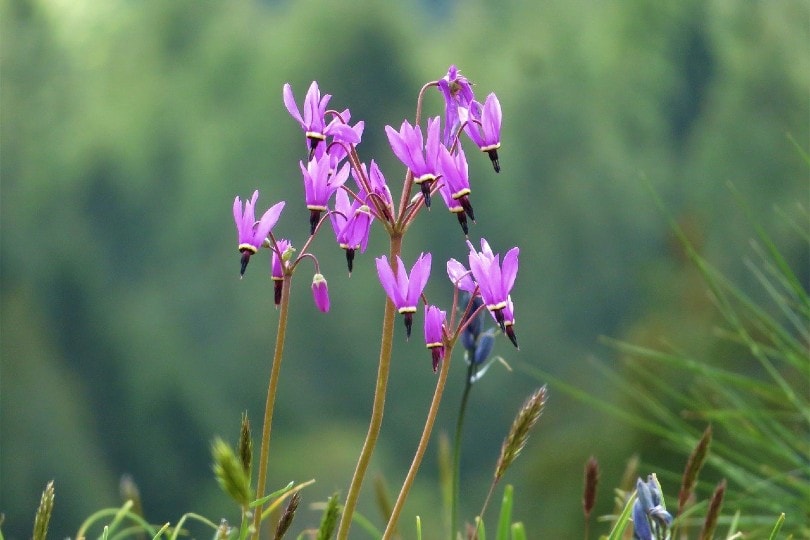
| Botanical Name | Pseuderanthemum laxiflorum |
| Soil | Well-drained, rocky, or sandy (pH 6.0–6.8) |
| Sun | Partial shade/sun |
| Hardiness Zone | 4–8 |
| In Bloom | May to June |
The lance-shaped leaves, pink petals, and the delicate nature of the shooting star make it a lovely pick for a garden in Florida. Native to North America, it has a relatively short lifespan (May–June). However, the unusual shape and the lovely smell make up for it. As long as you provide partial shade, this flower will flourish. It grows in rocky and sandy soil but is only 3–4 feet tall.
21. Firebush

| Botanical Name | Hamelia patens |
| Soil | Well-drained (pH 6.0–7.5) |
| Sun | Full sun/partial shade |
| Hardiness Zone | 9–10 |
| In Bloom | Spring through fall |
Known as one of the largest shrubs for gardens, the firebush mostly grows in tropical parts of the world. It’s native to Florida, by the way, and thrives in full sun and well-drained soil. Spring is usually when the firebush blooms and, thanks to the tough nature, it can last for several months, up to September–October. If you want to add some color and character to your garden, this shrub’s tube-shaped flowers will be perfect.
22. Sanchezia

| Botanical Name | Sanchezia nobilis |
| Soil | Well-drained, loamy, organic (pH 5.5–6.5) |
| Sun | Partial shade/sun |
| Hardiness Zone | 10–11 |
| In Bloom | Spring through fall |
The sanchezia shrub’s biggest “selling point” is, of course, the eye-grabbing foliage. The large leaves and purple-ish stems make it stand out even in the most crowded gardens. Sanchezia grows equally well in partial sun or shade but relies heavily on the soil. It needs to be organic and loamy for the shrub to prosper. It blooms in March–April through fall and is very easy to maintain even in the harsh Florida climate.
23. Lantana

| Botanical Name | Lantana Camara |
| Soil | Well-drained, composted (pH 6.0–6.5) |
| Sun | Full sun/partial sun |
| Hardiness Zone | 9–11 |
| In Bloom | June through October |
Naturalized in coastal regions of the US (including Florida), lantana is an invasive species. It features beautiful yellow, orange, and red petals rich with nectar. Garden beds and pots: that’s the best use for these shrubs. Plant them in composted, well-drained soil and see that they get enough sun (full exposure). The blooming period starts in early summer; the shrub lives until October/first frost.
24. Jacobinia

| Botanical Name | Justicia carnea |
| Soil | Well-drained, rich (pH 5.6–6.5) |
| Sun | Shade/partial shade |
| Hardiness Zone | 8–11 |
| In Bloom | Summer to early autumn |
Native to South America, jacobinia is a relatively short shrub, but it’s the blooms that make it a popular choice among Florida gardeners. The flowers resemble frozen fireworks and prefer partial shade instead of full sun. Well-drained soil is a good place to start, but if you want fast results, it has to be rich. Water jacobinia moderately and regularly, and those astonishing clusters of flowers will take over the garden in no time!
25. Butterfly Bush
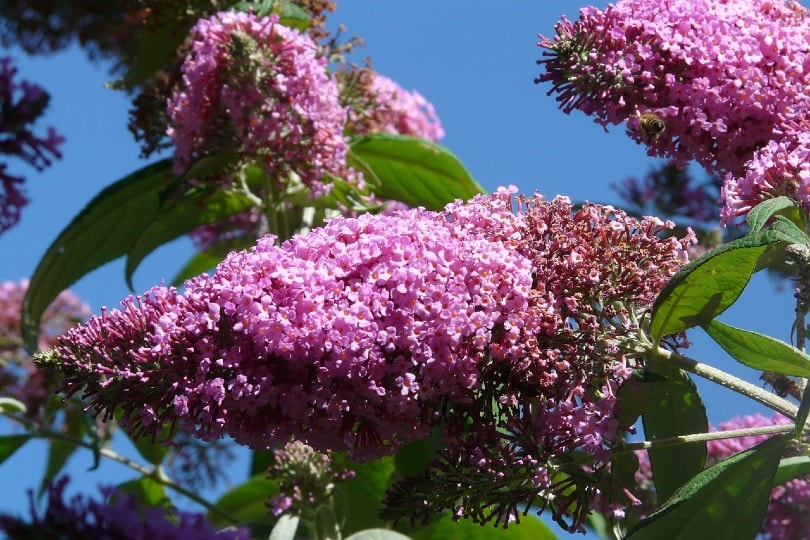
| Botanical Name | Buddleia davidii |
| Soil | Well-drained, composted (pH 5.5–8.5) |
| Sun | Full sun |
| Hardiness Zone | 5–11 |
| In Bloom | Mid-summer through fall |
It’s called a bush, but it’s actually a fast-growing shrub. The long panicles of blossoms attract butterflies in summer (yes, hence the name). The butterfly bush can reach 5–6 feet in height. As long as it gets 4–5 hours of sun and composted, drained soil, you’ll see the sprouts turn into beautiful flowers as early as late June/mid-July.
26. Plumbago

| Botanical Name | Plumbago auriculata |
| Soil | Well-drained, fertile (pH 6.1–7.5) |
| Sun | Full sun/partial shade |
| Hardiness Zone | 9–10 |
| In Bloom | Spring through fall until frost |
Here, we have another rather tall shrub (up to 5 feet) that easily adapts to Florida’s heat and humidity. Plumbago might not look like much at first, but once it flourishes, it does look quite amazing. Full sun and partial shade, along with fertile, drained soil and regular watering are all that’s required for it to spread its lovely blue flowers.
If you live in Central/South Florida, Plumbago will bloom from early spring to November. And if you’re located in the northern parts of the state, expect Plumbago to bloom from mid-spring through fall.
- Related Read: 18 Types of Palm Trees in Florida (With Pictures)
Conclusion
Florida’s climate is rather different from that of the rest of the US. That’s why you need to be picky when choosing between different flowers/shrubs to plant in your garden. Today, we checked out 26 eye-grabbing flower types that can turn even the most boring backyard into a sight for sore eyes. More good news: they don’t take much effort to grow.
As long as you follow our guide on the soil, hardiness zones, and exposure to the sun, these flowers will flourish! Besides, they belong to different groups (perennials, annuals, and shrubs) and have different blooming periods. Don’t rush yourself: go back to the list, pay extra attention to the metrics, and make your choice wisely. Happy gardening and enjoy your new flowers!
Featured Image Credit: Lernestorod, Pixabay
Contents


